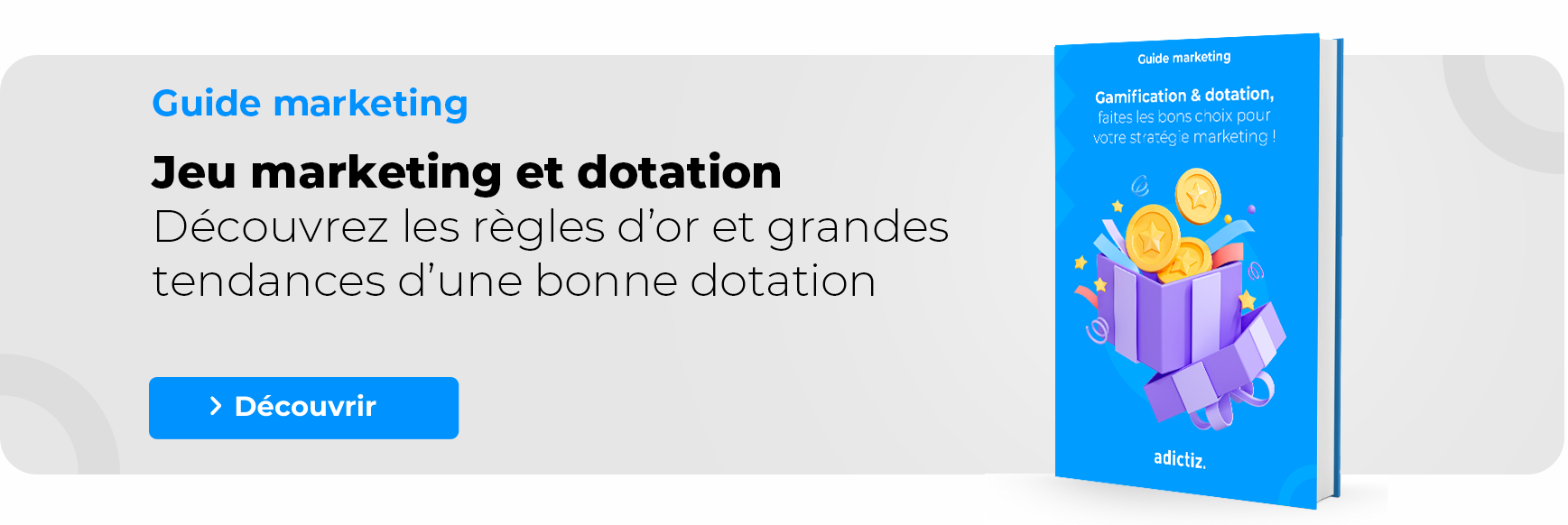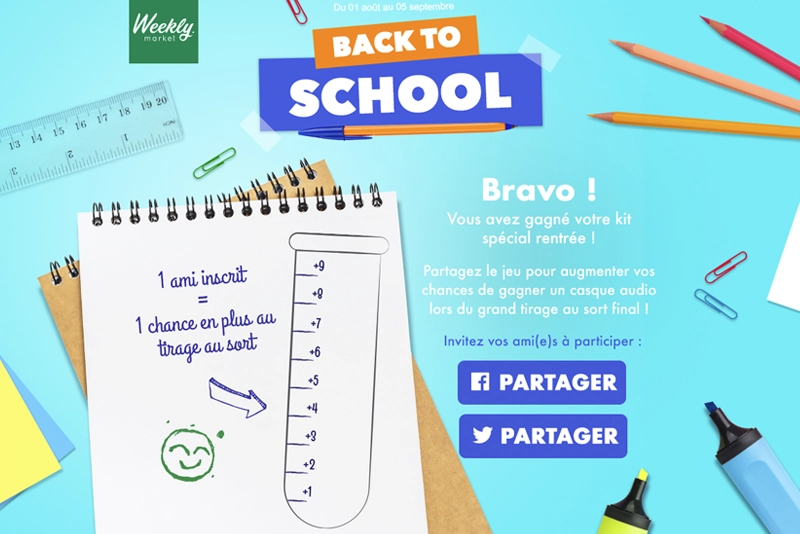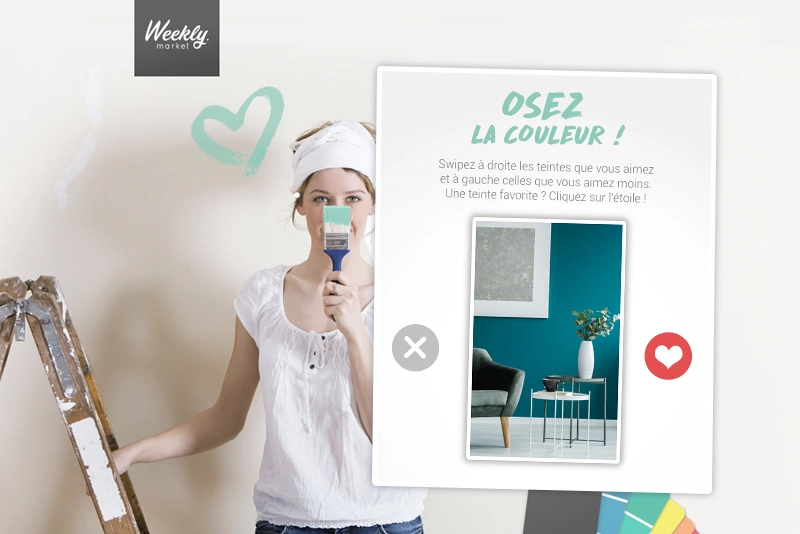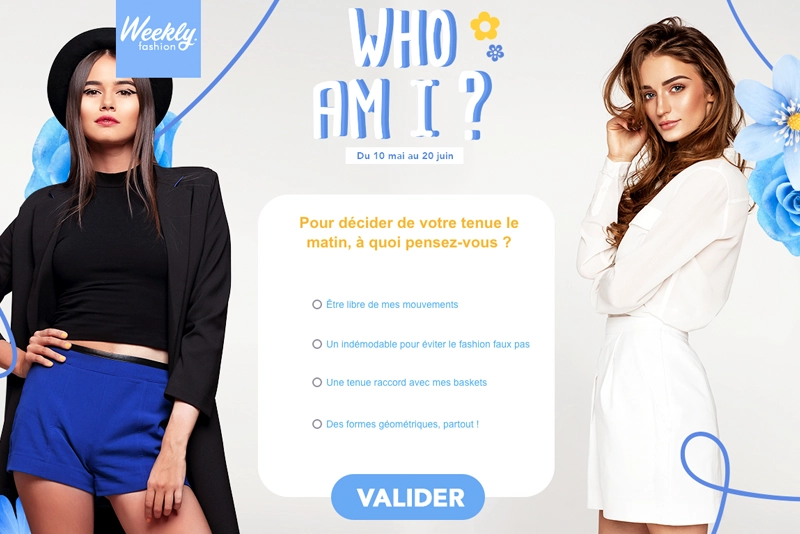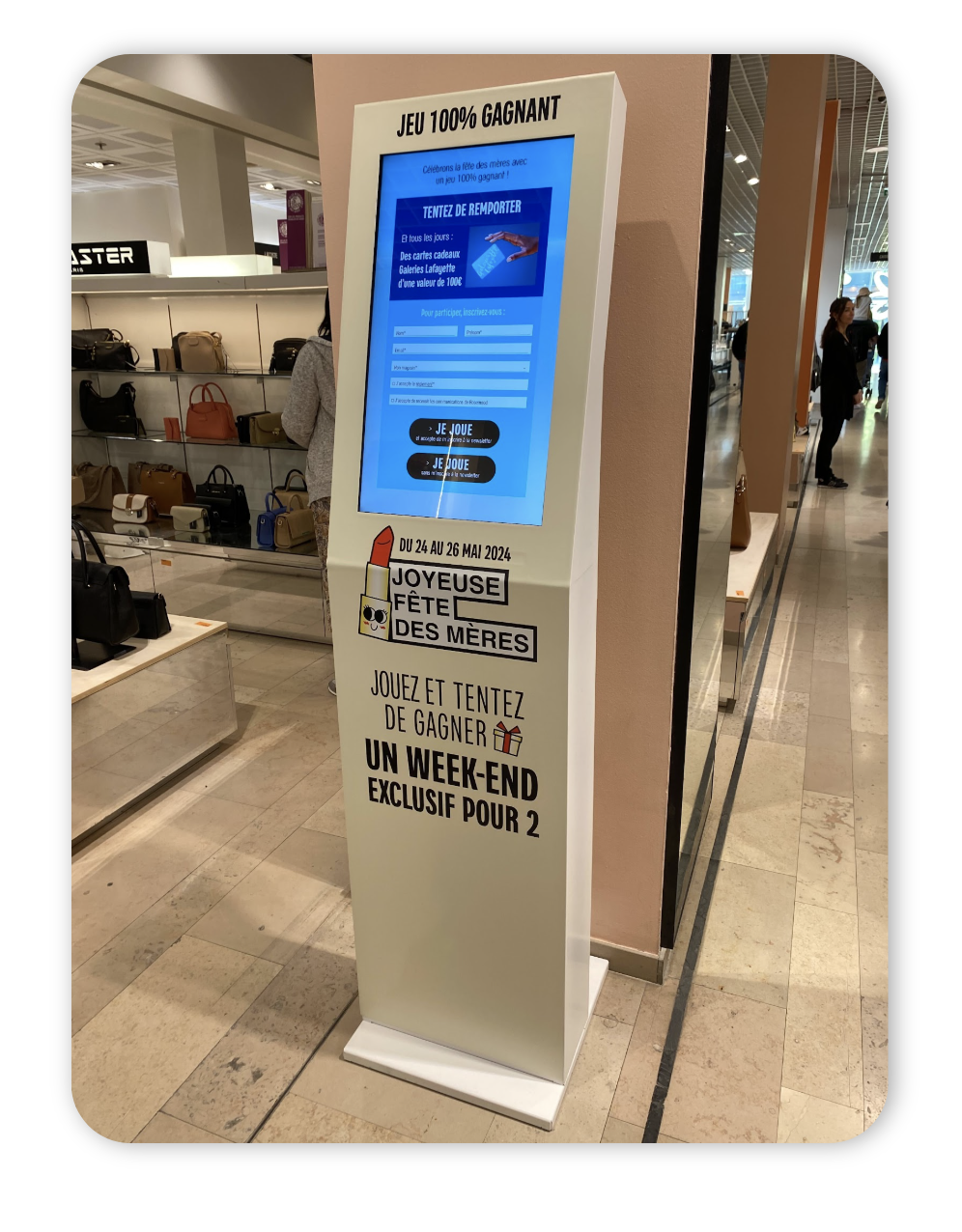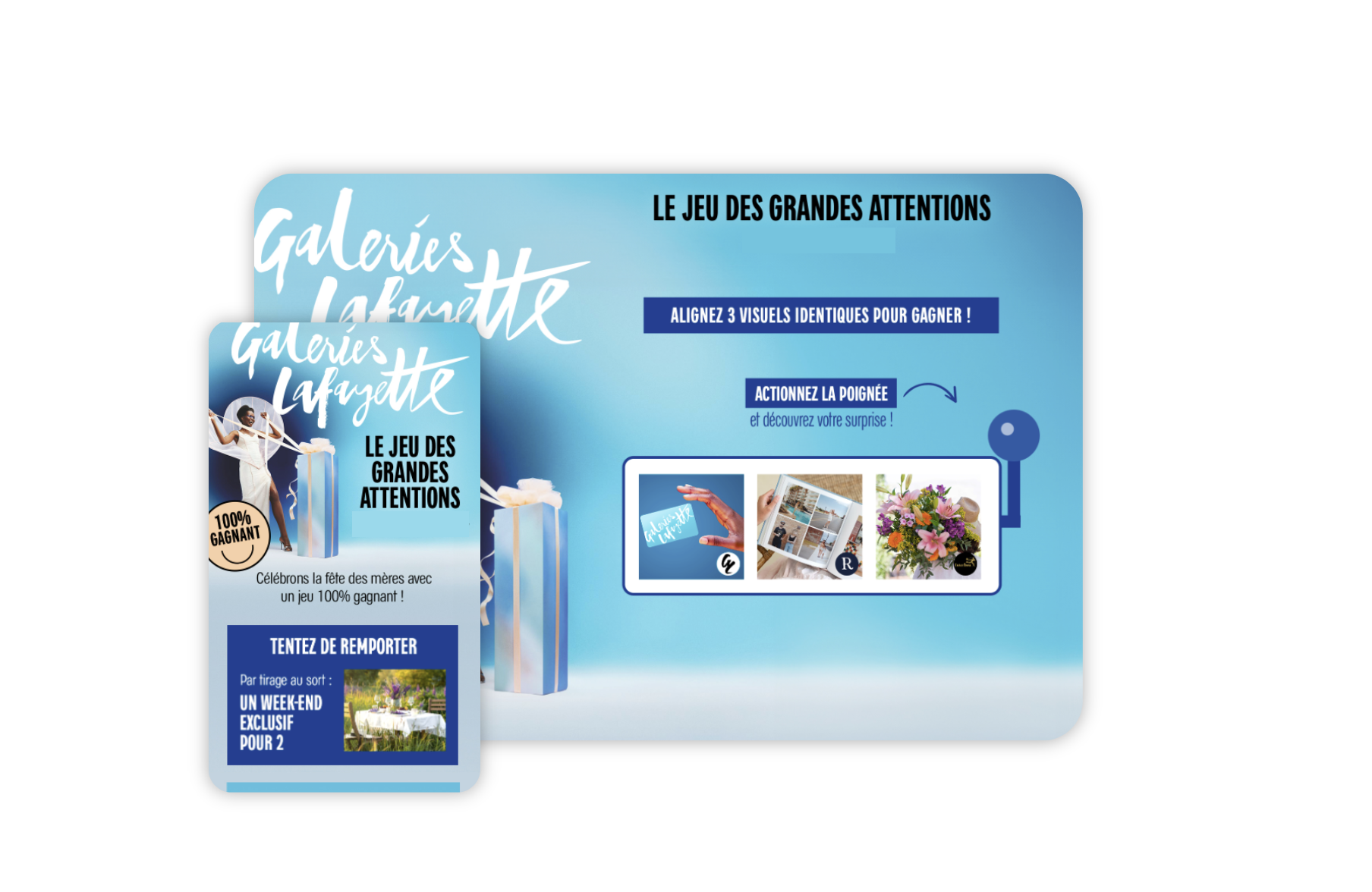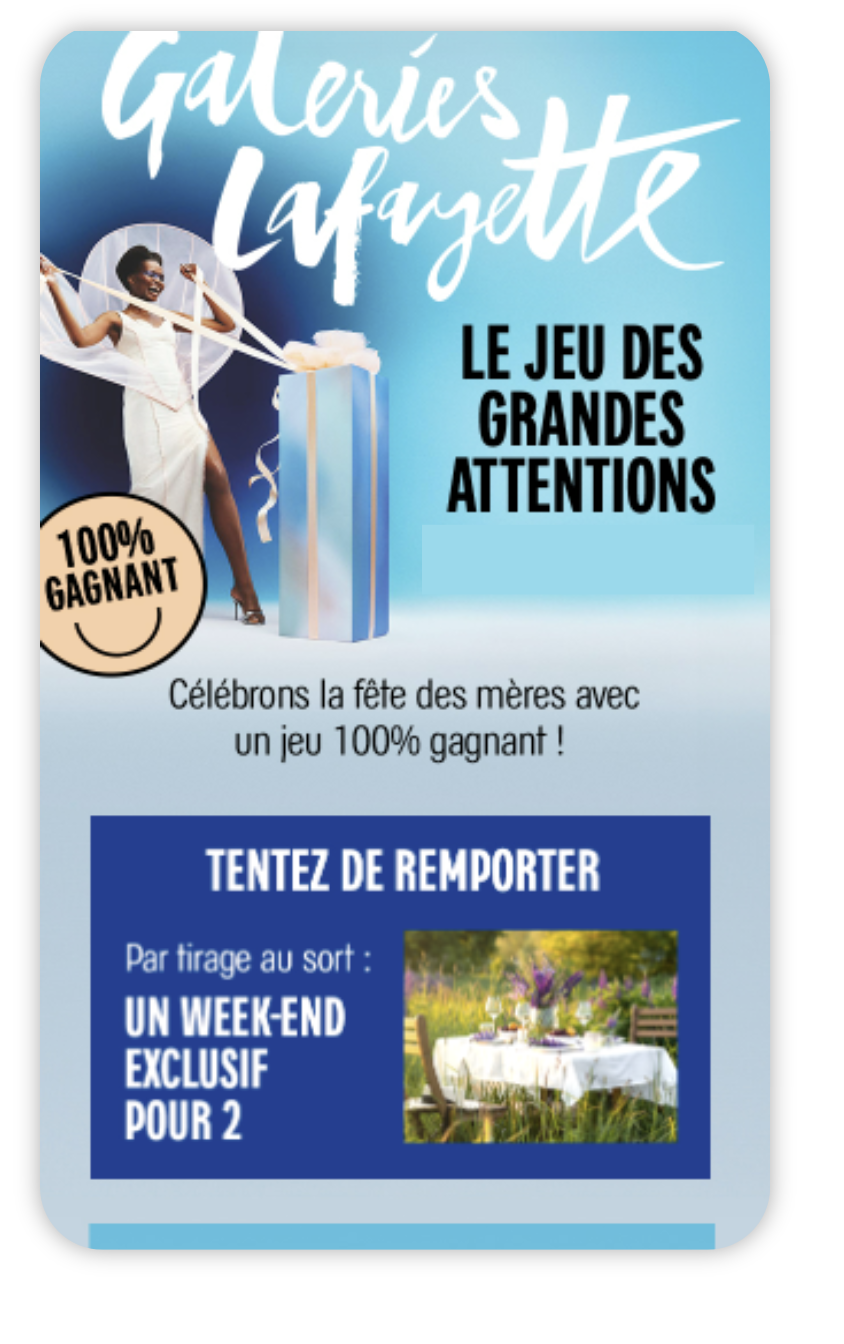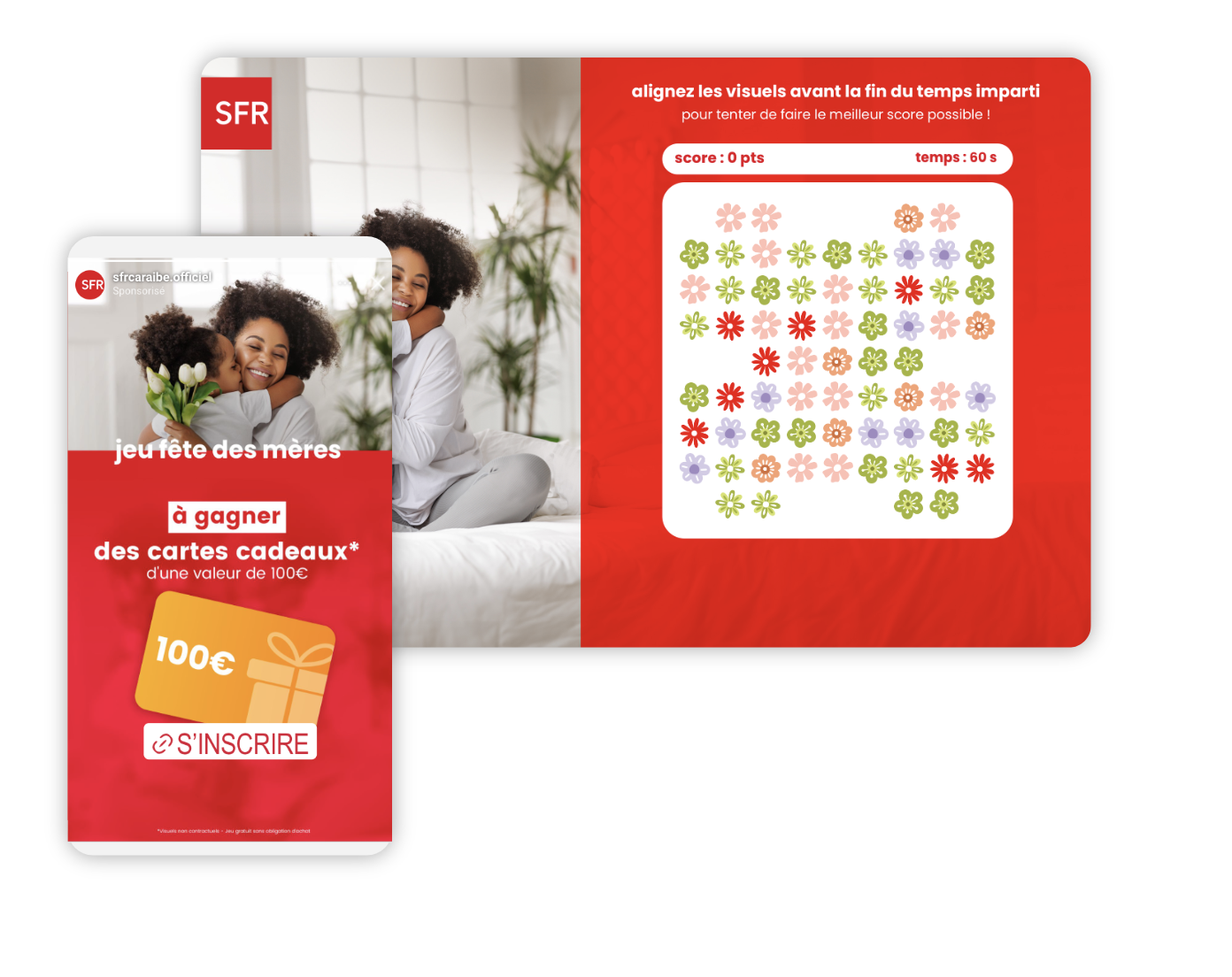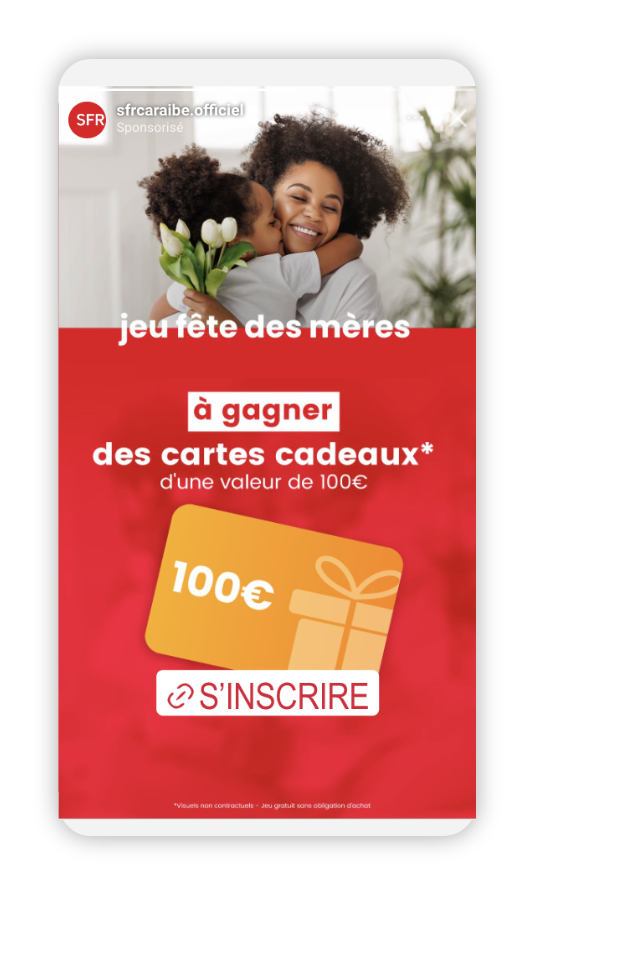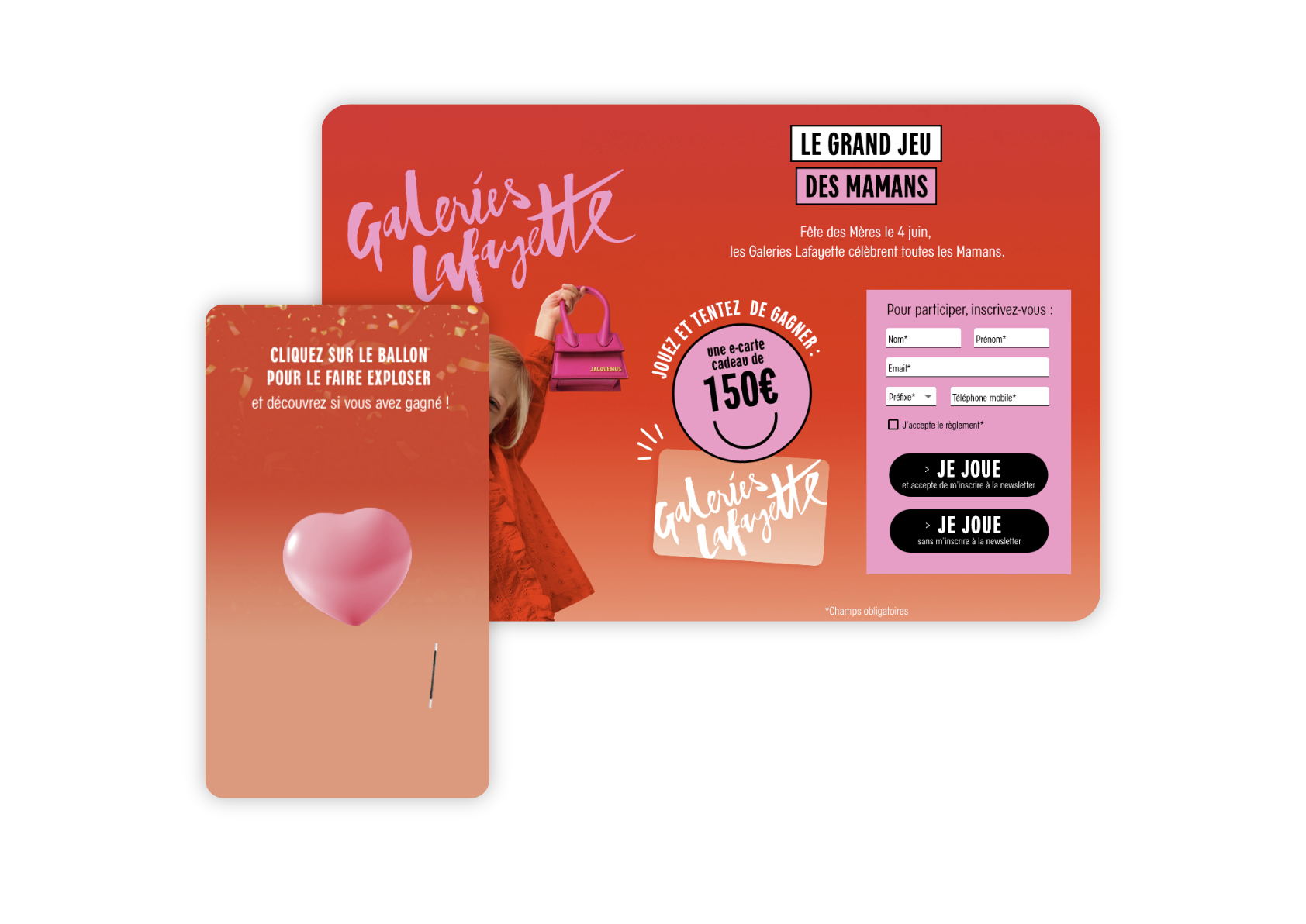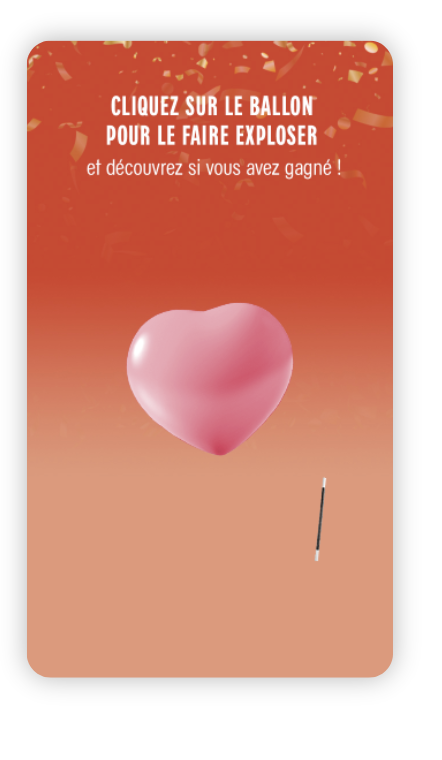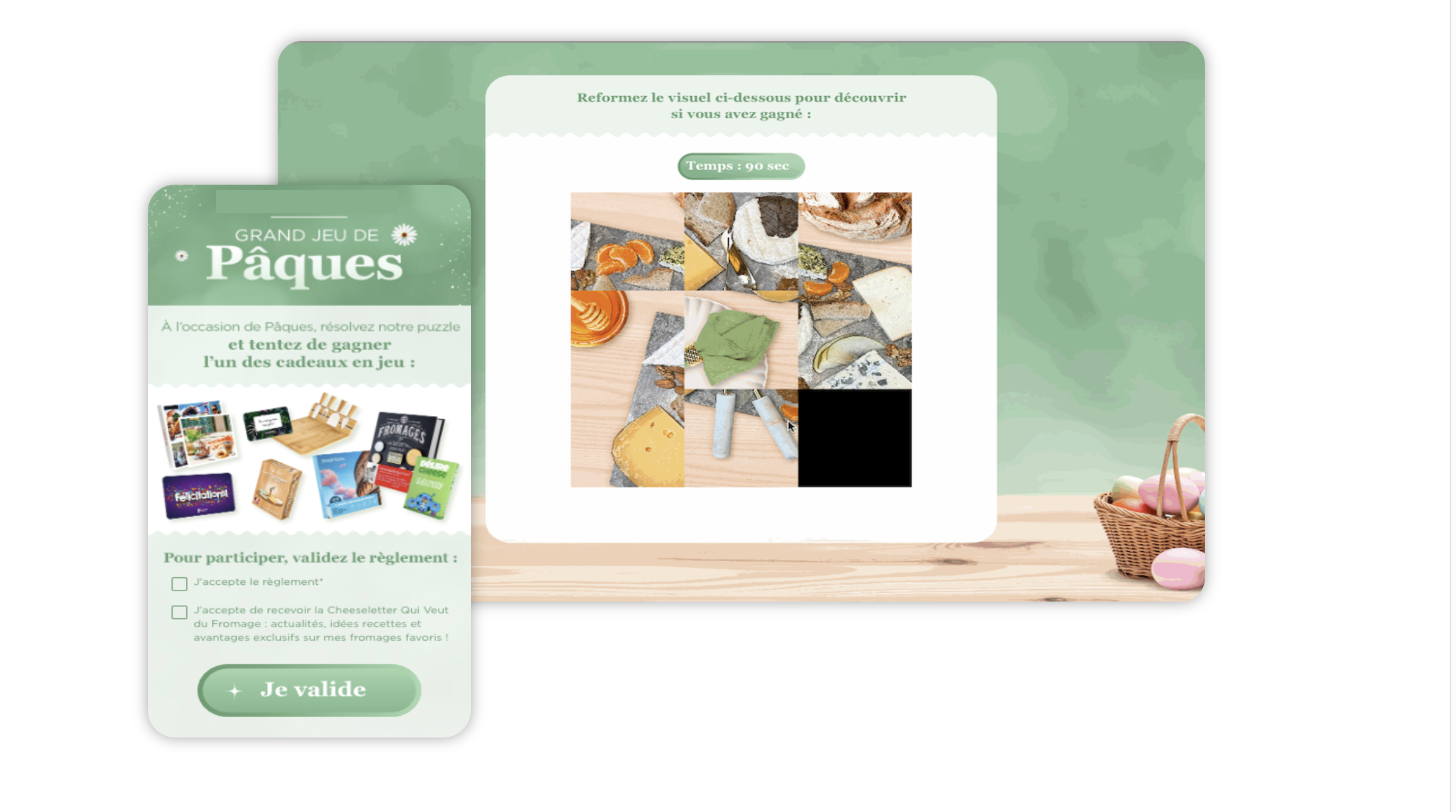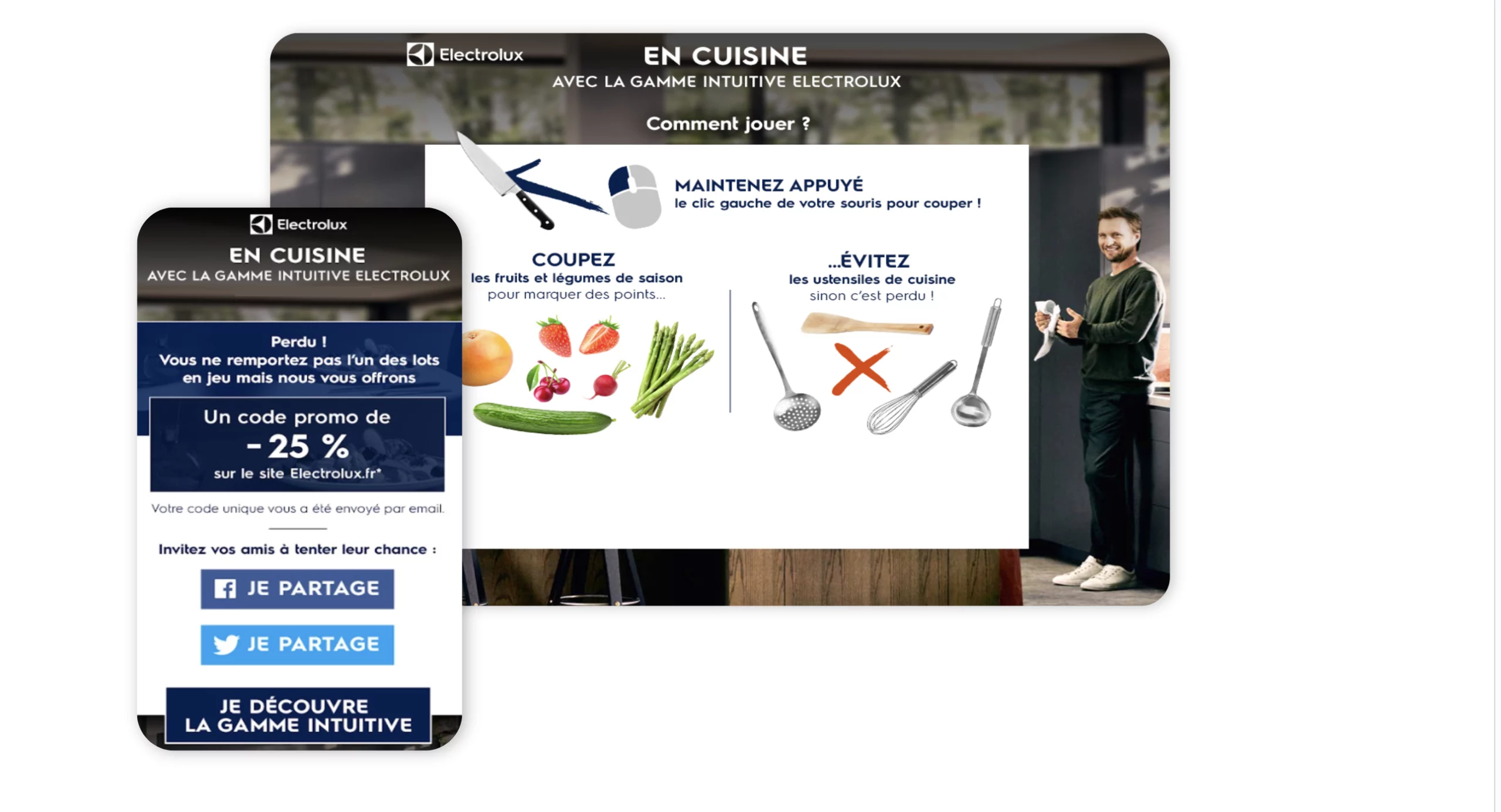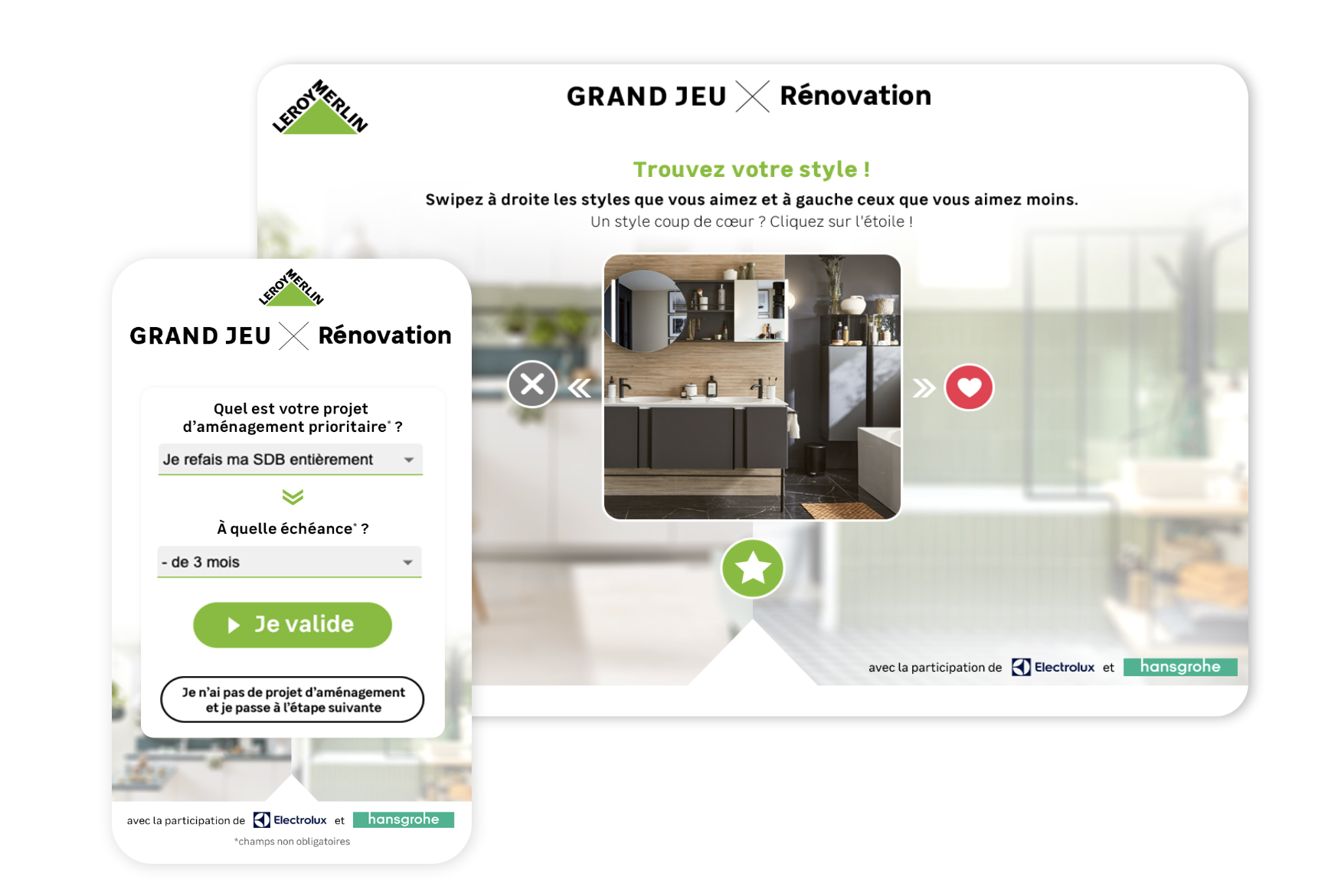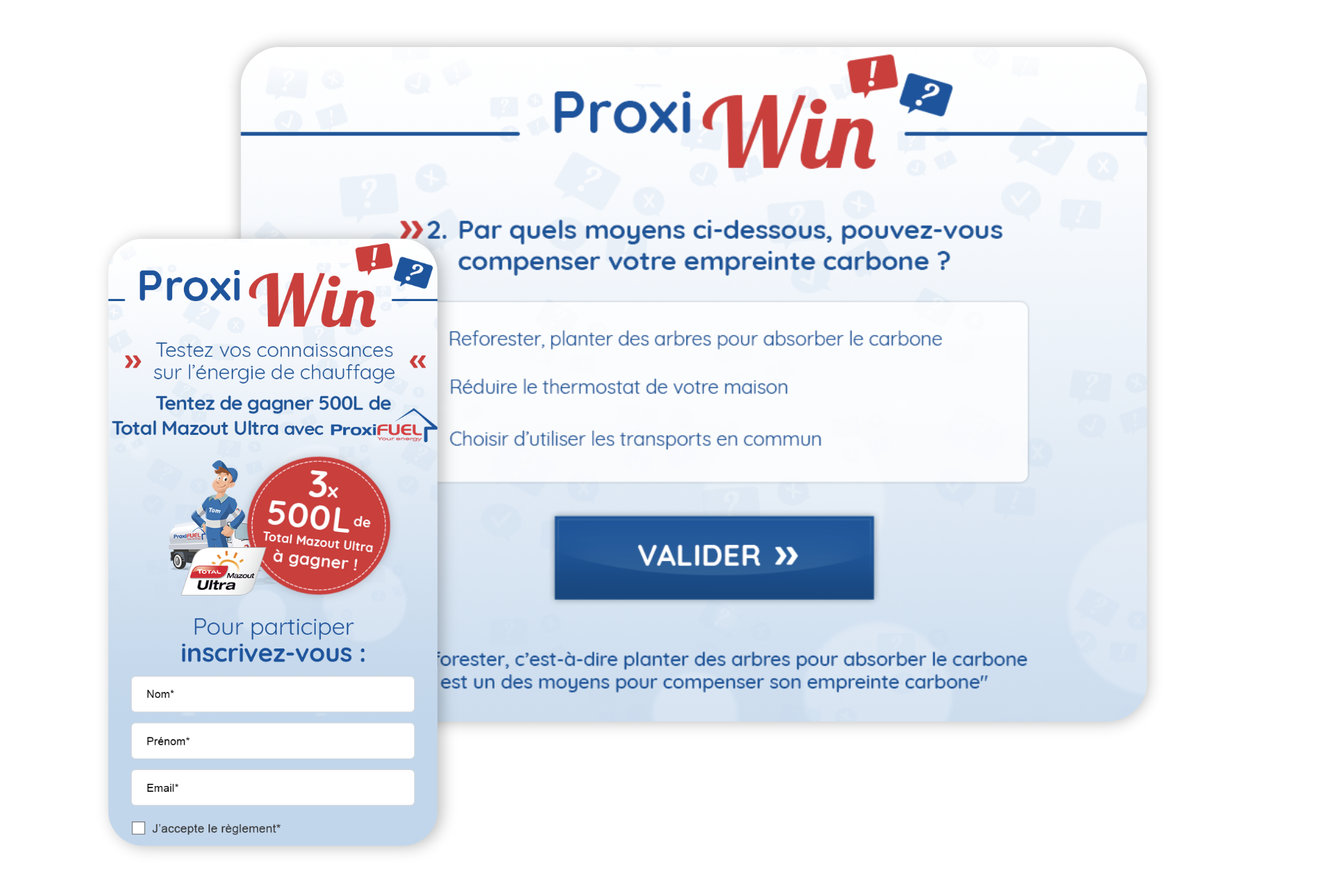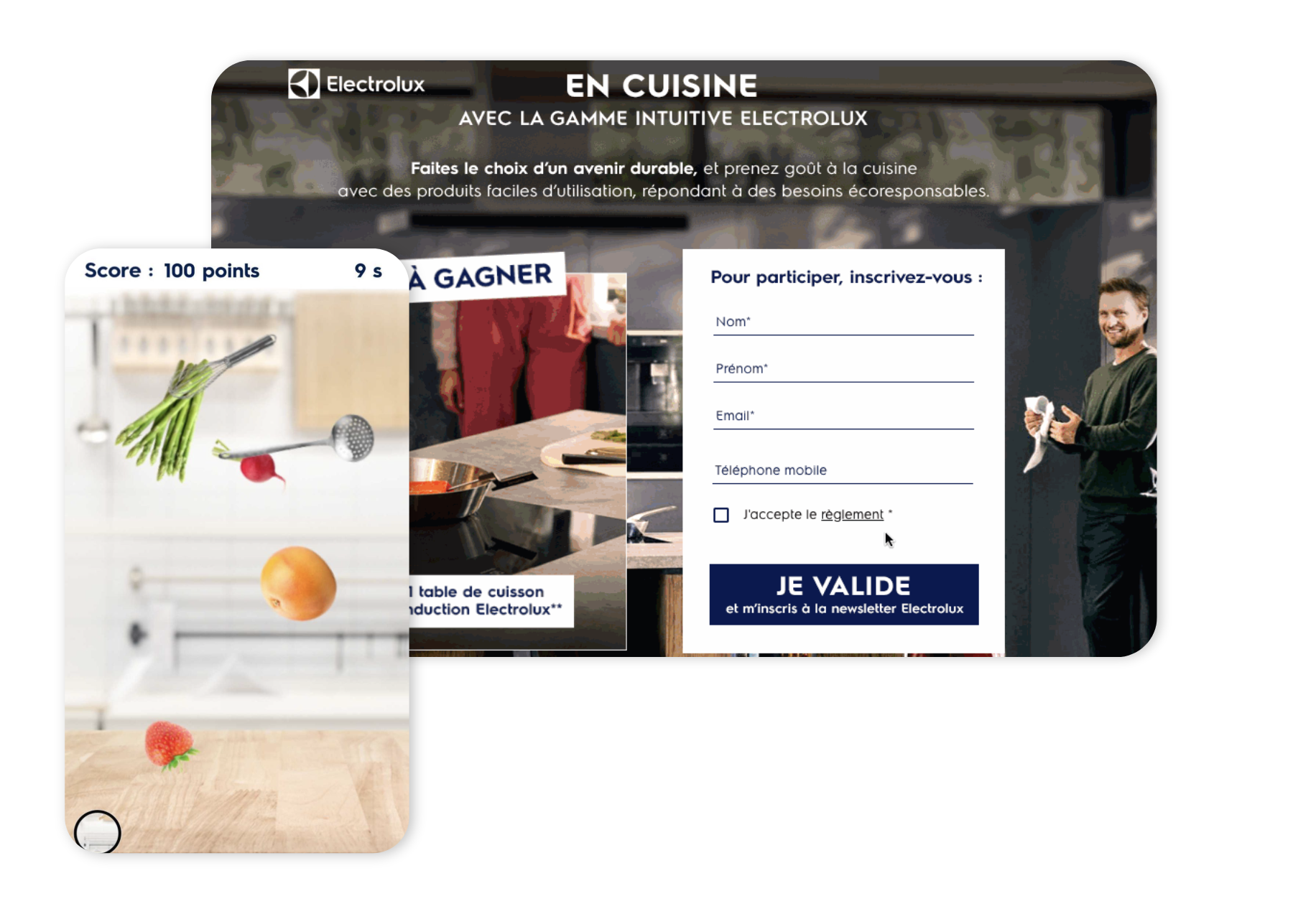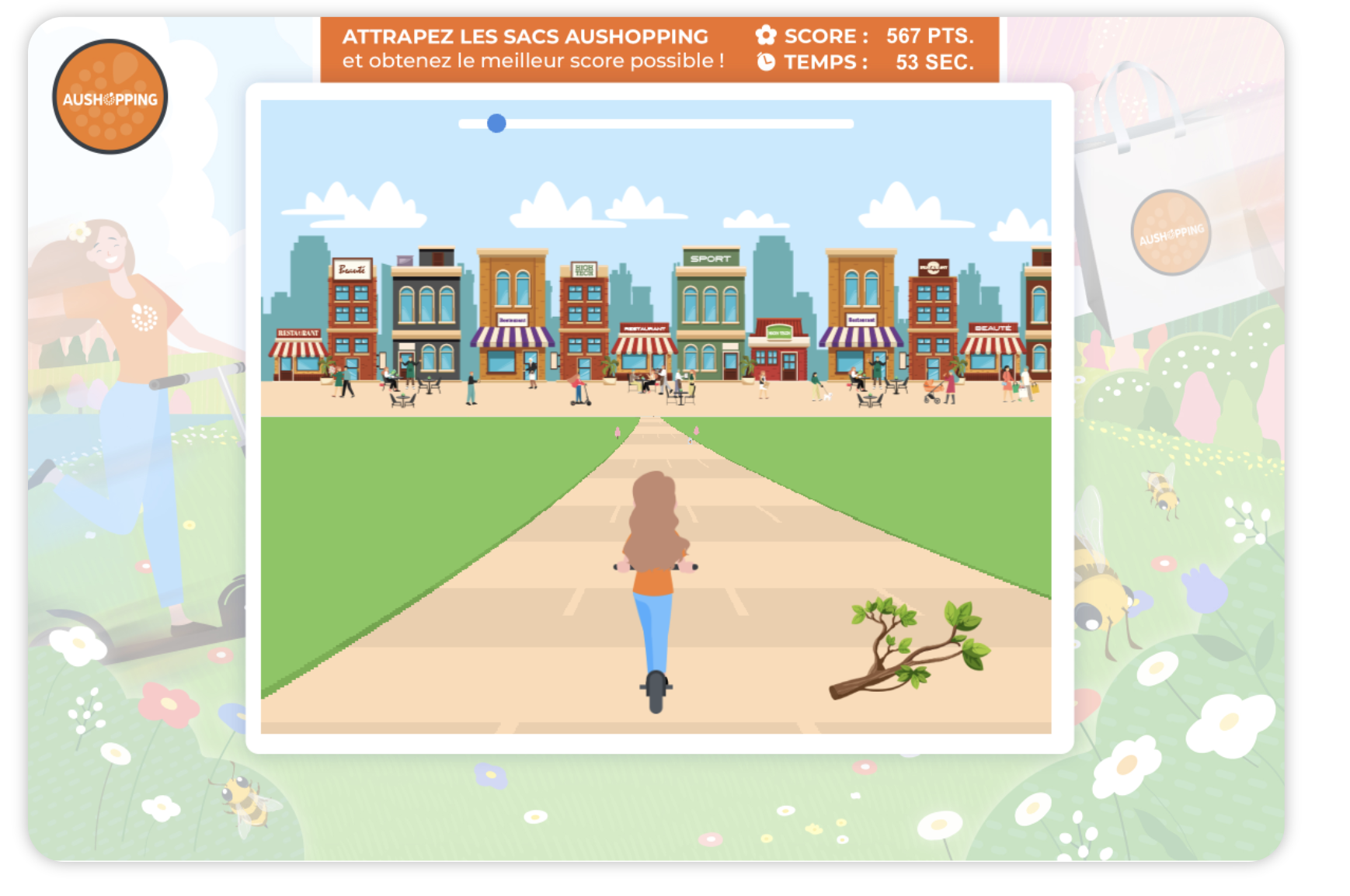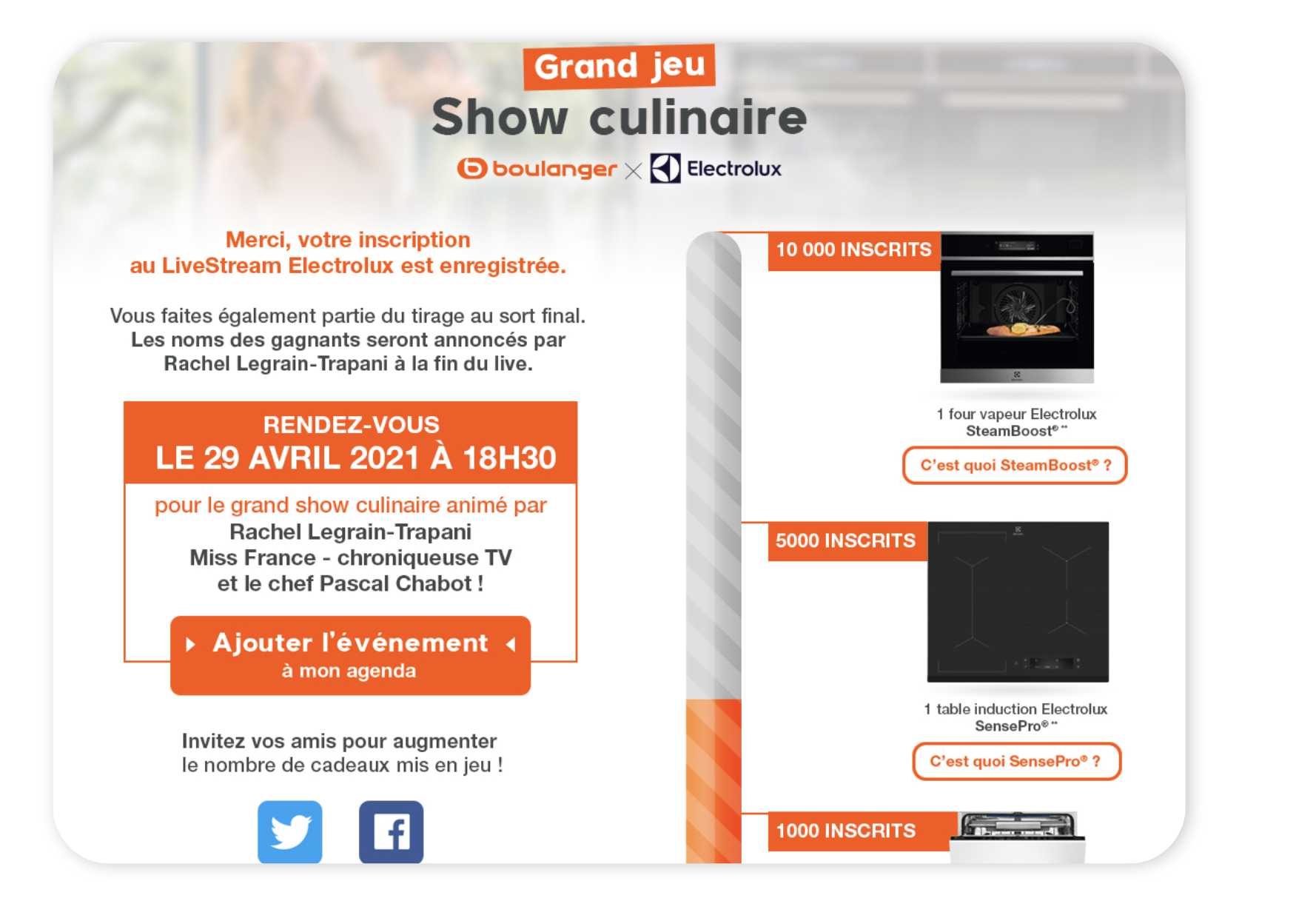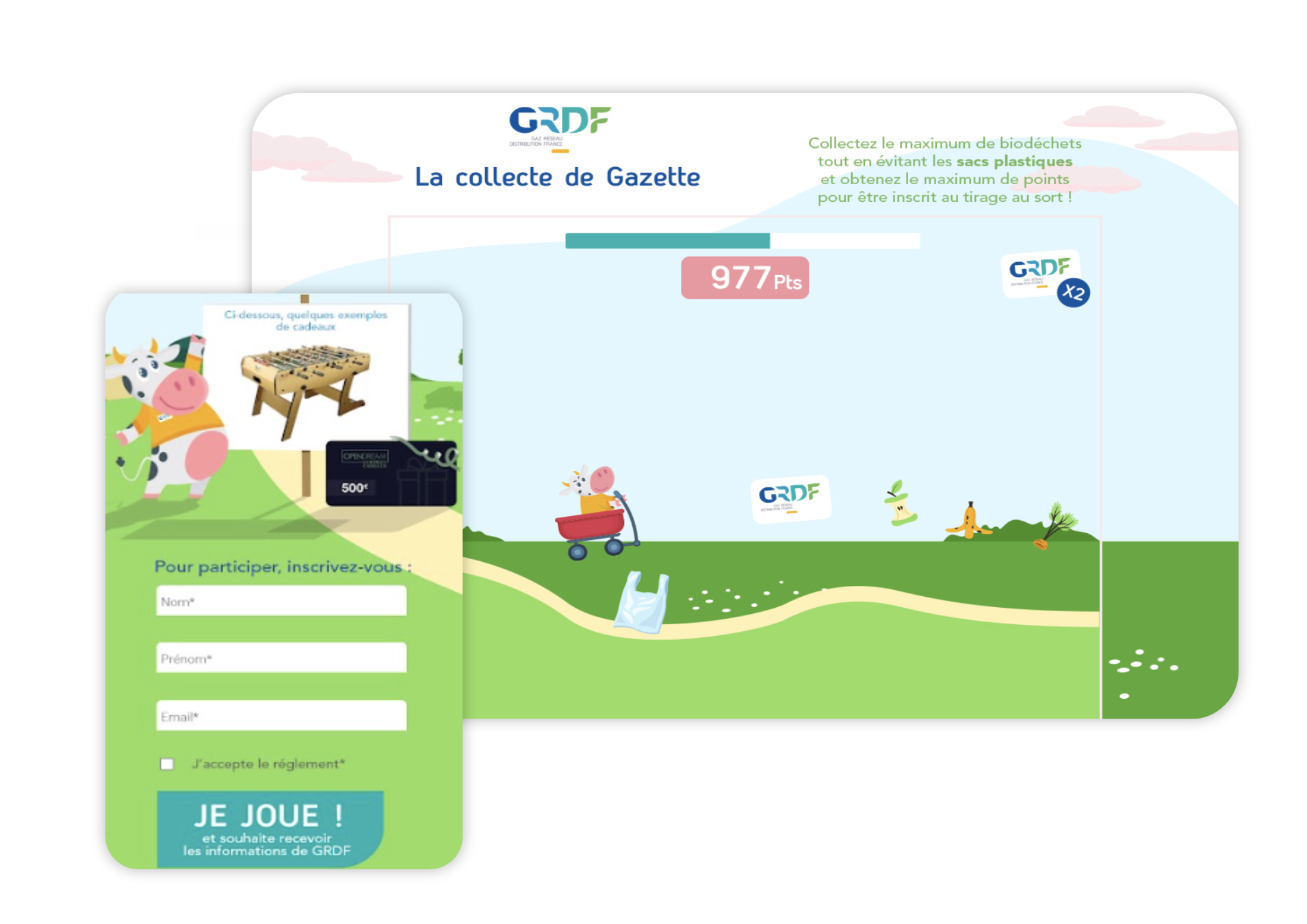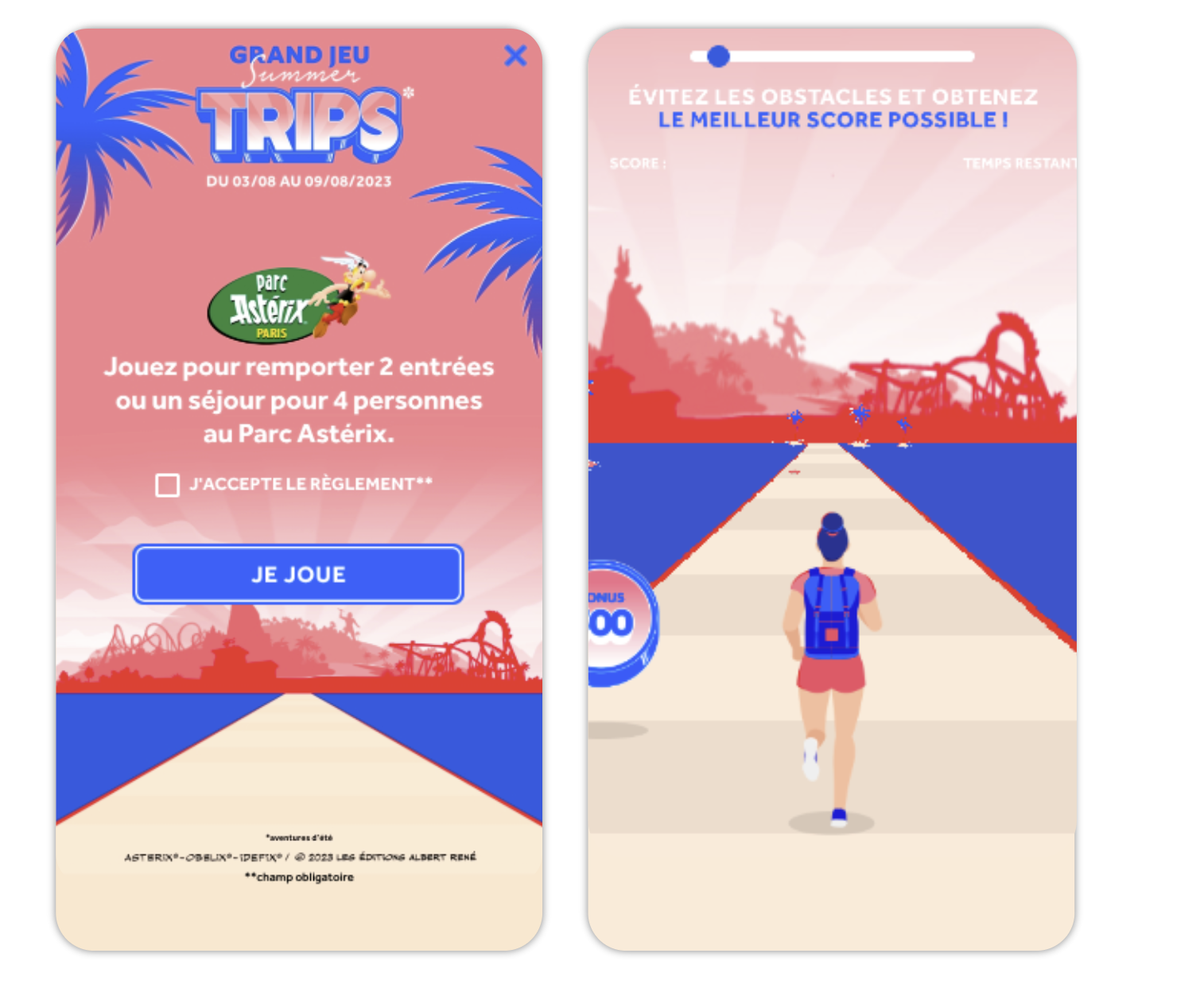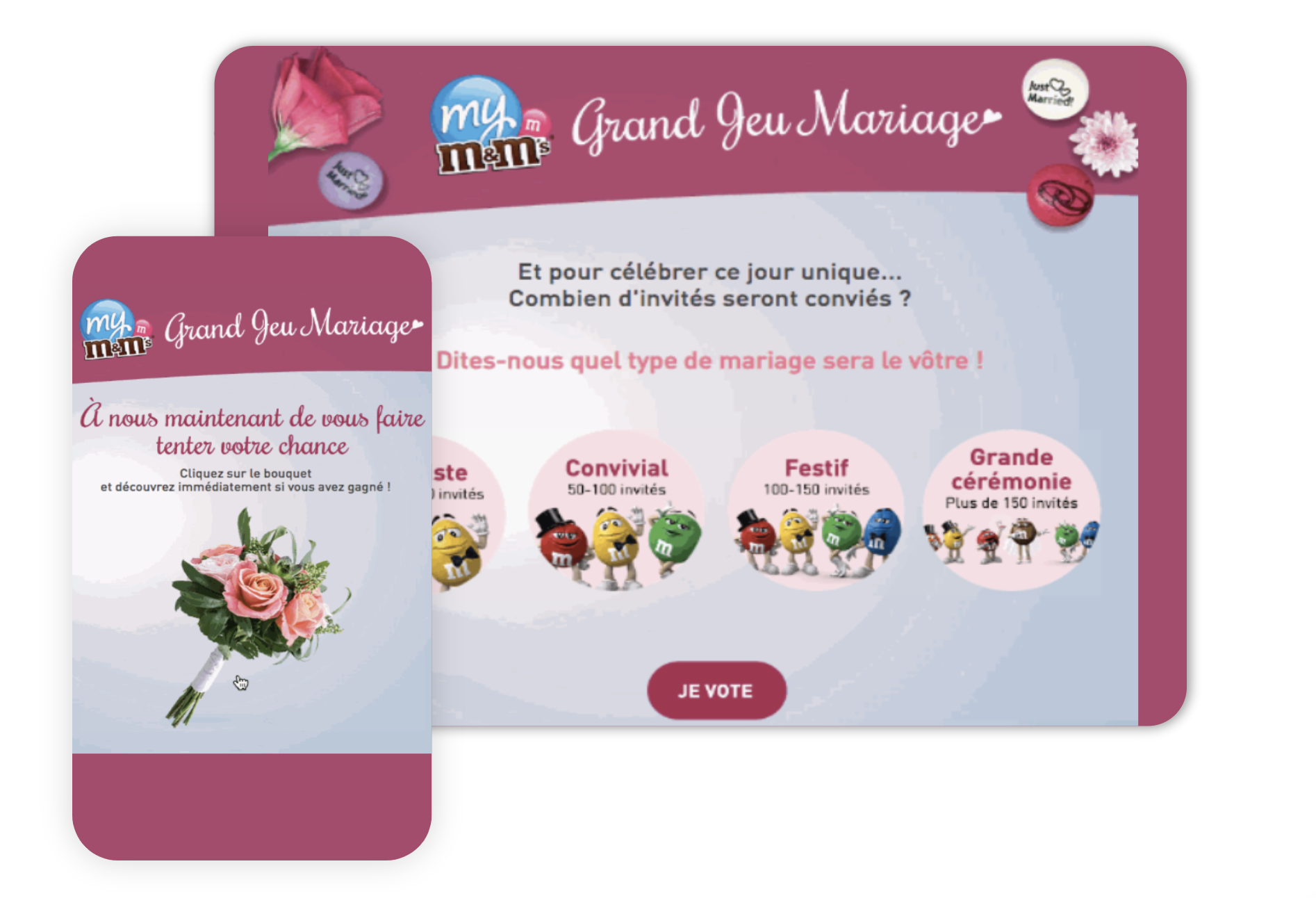
Choosing the right prizes for a marketing competition
There are many reasons why consumers take part in a marketing competition. First and foremost, the majority want to take part in a unique experience, compare themselves with a community (by climbing the leaderboard), but also find out about new products or brand news.
Nevertheless, it’s impossible to deny that gamers enjoy marketing games largely because they offer them the chance to win rewards. The choice of prizes for a competition is therefore crucial to its success. It is a lever for increasing the number of participants, making your interactive game viral and boosting participant retention.
In this guide, we share practical advice and concrete examples of how to choose the best prizes for a marketing competition.
Why is choosing the right gifts so important?
Do you know what the first thing participants remember when they discover a competition for the first time?
The prize!
Overall, it’s the game that attracts the most attention from users, ahead of the concept of the marketing game, its graphic universe, the calls to action and the organic brand.
The golden rule for creating an engaging marketing game that encourages your target audience to take part is to choose a striking prize that will capture their attention or stimulate their curiosity!
The prize money for a competition will have an undeniable effect on its appeal. To attract the maximum targeted audience, so it’s crucial to choose your endowment carefully. But it’s also crucial to promote it in all your communication media (media plan, home page, landing page).
This in no way precludes designing a competition that is attractive, challenging and original.
But in order of priorities, the equation for a successful competition is as follows:
A well-chosen prize + a well-thought-out concept = guaranteed seduction
Understand the motivations of the participants of the competition to choose its endowment
Like any other marketing strategy, the choice of prizes for a competition must be user-centric. Cela signifie concrètement qu’il ne faut pas choisir les lots à remporter en fonction des objectifs de son entreprise (par exemple des produits invendus qu’elle souhaite écouler).
The rewards of a marketing game must be thought out according to the participants’ expectations and what is likely to motivate them to play!
In practice, the right prize will not be the same for all companies and all competitions. The company will have to base its decision on the data it possesses about its target audience. In particular the first-party data it has collected from previous marketing campaigns.
Nevertheless, a better understanding of consumers’ motivations as a whole, and of the current economic context, will enable us to sketch out the contours of the ideal endowment!
Boosting purchasing power with its interactive game prizes
The current boom in marketing competitions is part of a social and economic context that is very specific.
On the one hand, consumers value authentic and playful interactions with brands. They are sensitive to the efforts made by companies to offer them quality content and who are committed to creating a real, close relationship with them.
On the other hand, 74% of French people say that the year 2022 (and its inflationary context) have weakened their finances. 62% will have changed their consumption habits by 2022 to preserve their purchasing power.
Against this backdrop, with household morale at half-mast, businesses have a role to play. They can offer promotions or other commercial actions (such as the famous anti-inflation basket) to help consumers preserve their purchasing power.
But they can also give their target audience the opportunity to win prizes as part of a competition. This will serve the interests of consumers at the same time. In fact, 59% of them are actively looking for promotions. But the marketing game is also a powerful vector for brand awareness, commitment and loyalty.
The golden rules of good gamified marketing staffing
Now that the company has a better understanding of the motivations of future participants in its competition, all it has to do is choose the right prize accordingly.
Above all, it needs to ask itself the right questions:
- What is the context of my scheme?
- What are the objectives of my interactive marketing campaign?
- What is my target audience: the typical profile of participants, their motivations and their expectations of the brand?
- What is its budget (for the campaign itself and for endowments)?
- What human resources does it have?
Based on their answers and the information we’re about to share with you, it will be easier to organise a winning competition!
The most effective prizes
As a general rule, vehicles, money (in the form of a voucher, for example) and trips are the three most popular rewards for participants in a competition. However, there are other possible prizes to explore, depending on your objectives and the resources available.
Fashion/beauty items, home furnishings and high-tech appliances are also excellent endowment choices.
Choosing a striking prize
The whole point of a good competition prize is to catch the eye and convert as many Internet users as possible into the target players.
The prize must be eye-catching. To do this, it must be visible in the form of a good-quality photo. The visuals must also show the full extent of the prizes up for grabs, as well as their overall value (in euros).
A very good example of hard-hitting prize comes from the competition organised by La Roche-Posay. The campaign’s visuals perfectly showcase the brand’s new serums, which players can win by taking part in a Click & Win. The result: over 69,000 people signed up.
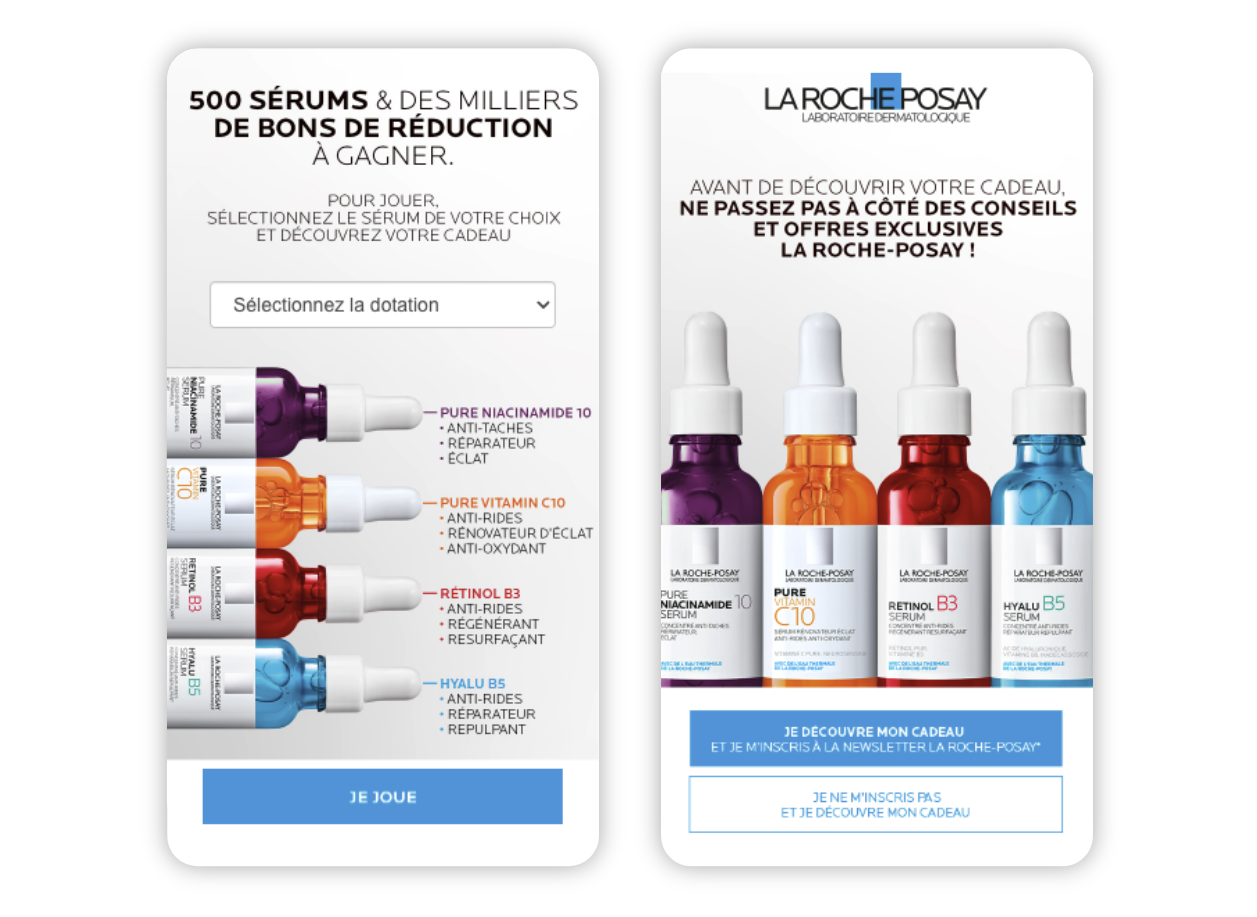
A prize consistent with the brand universe
50% of participants expect a prize linked to their brand. It is therefore advisable to choose a prize that is easily associated with your company, your sector of activity or the marketing highlight ( Christmas, Halloween, etc.). This choice of endowment will increase the conversion rate of the campaign as well as its memorability.
For Black Friday, Norauto has therefore proposed a ‘your order 100% reimbursed’ scheme. This is a promise that is consistent with marketing highlights, giving consumers the chance to grab a bargain.
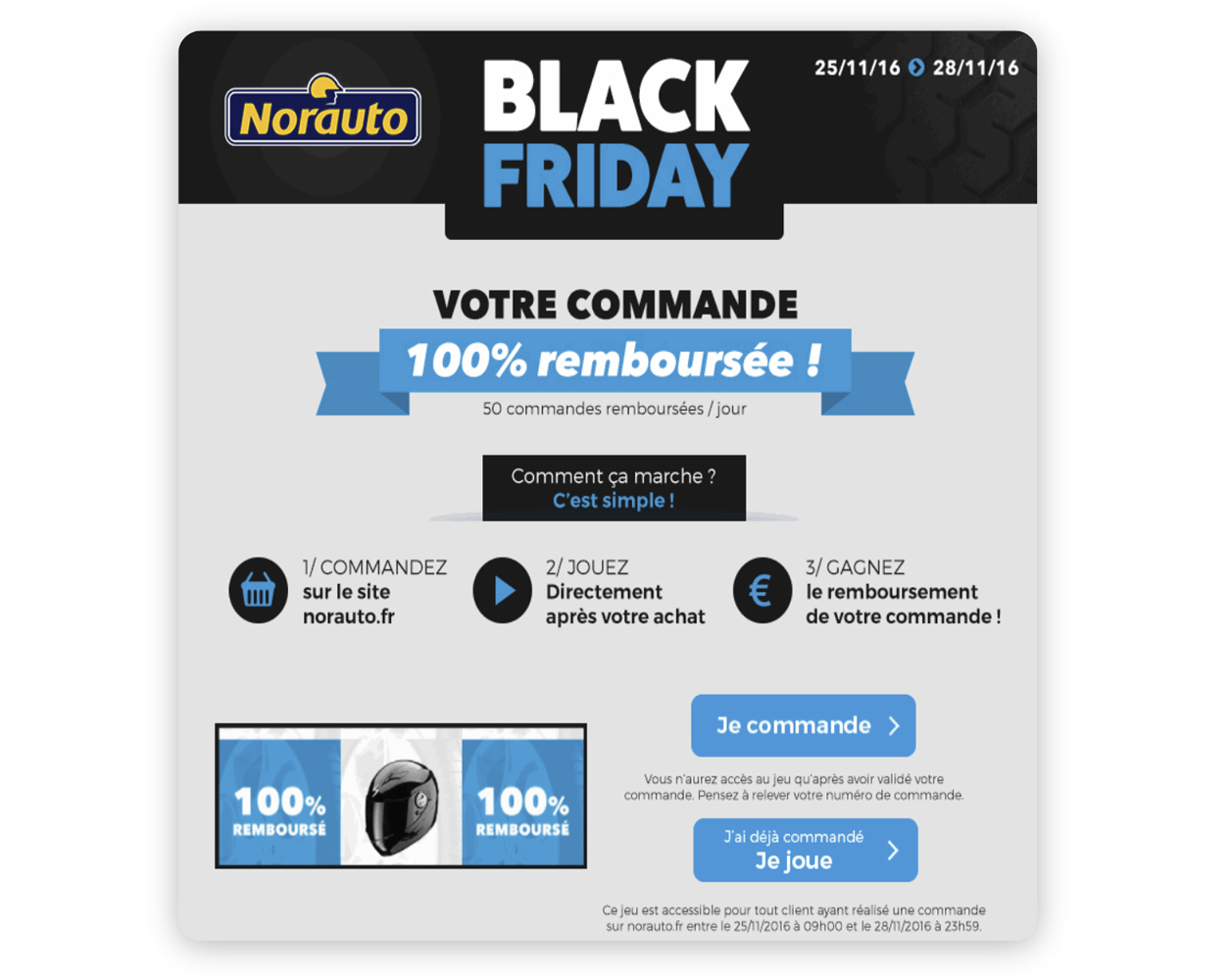
A prize in line with its interactive marketing campaign
The choice of prize must also be adapted to the context of the marketing game and the objectives it is designed to achieve.
For example, a competition organised to generate leads should choose an exceptional prize (a car or a high-tech device). It can also multiply the number of prizes. To generate traffic and encourage conversion, the gift chosen should be linked to an act of purchase (gift card, discount, etc.).
Targeted prizes for participants
Choosing the right reward for a competition also means defining the target audience you want to reach.. Il peut s’agir d’une cible familiale, avec des enfants. Ou plutôt d’un public féminin/masculin. Les marques devront également s’intéresser à l’âge/génération de leur audience pour choisir la bonne dotation.
The Bonduelle brand has opted for a targeted approach by launching a campaign aimed at customers who have purchased a Bonduelle product. To take part, you had to enter the bar code of your Bonduelle product.
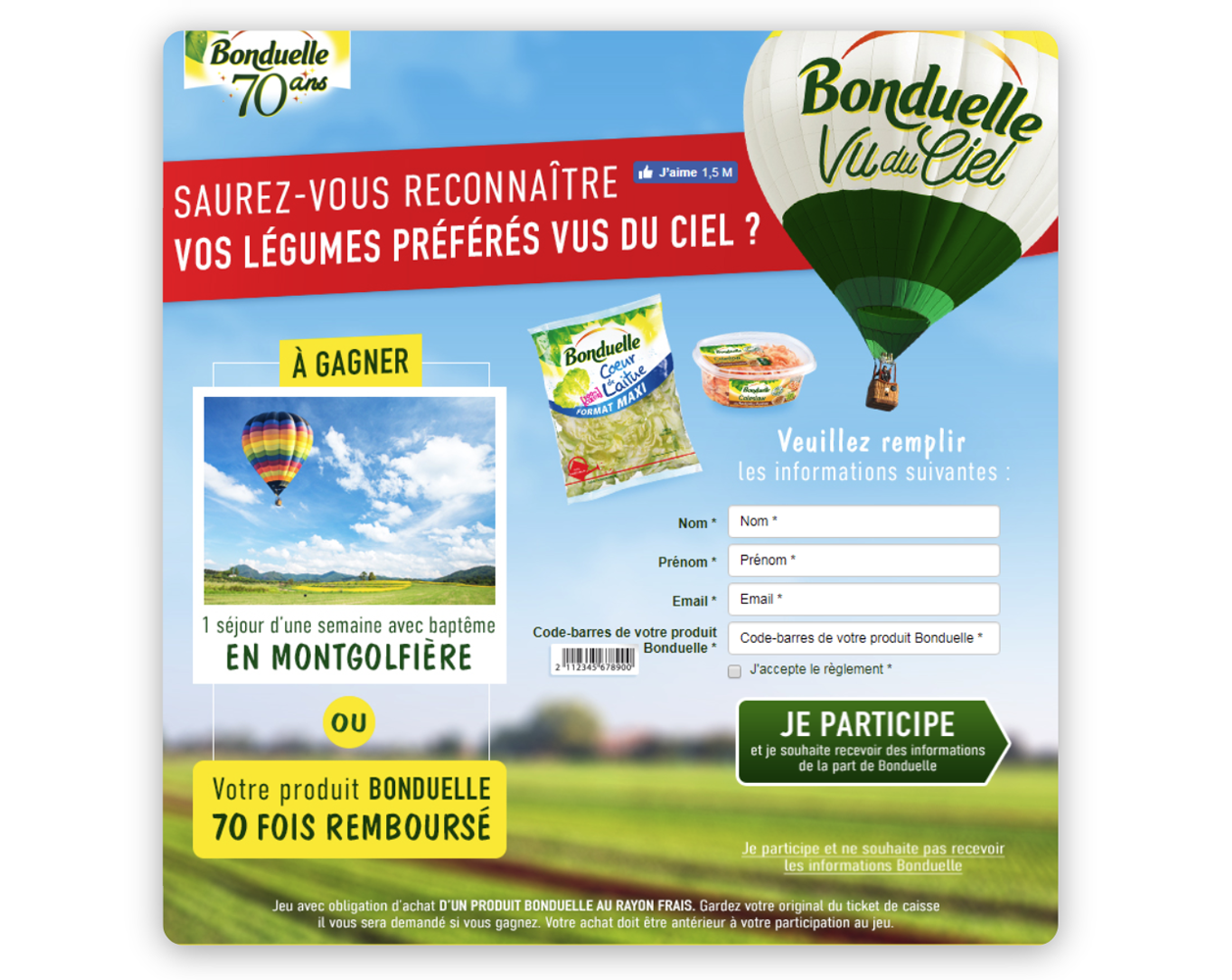
The choice of prize is crucial to accelerating the performance of a marketing campaign, whatever its objective (loyalty, engagement, visibility). So take the time to select rewards or prizes that are both relevant to achieving the objectives you’ve set yourself and meet the expectations of your target audience!
And to make organising your competition easier, discover the Adictiz solution!


